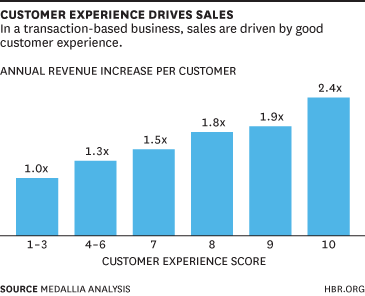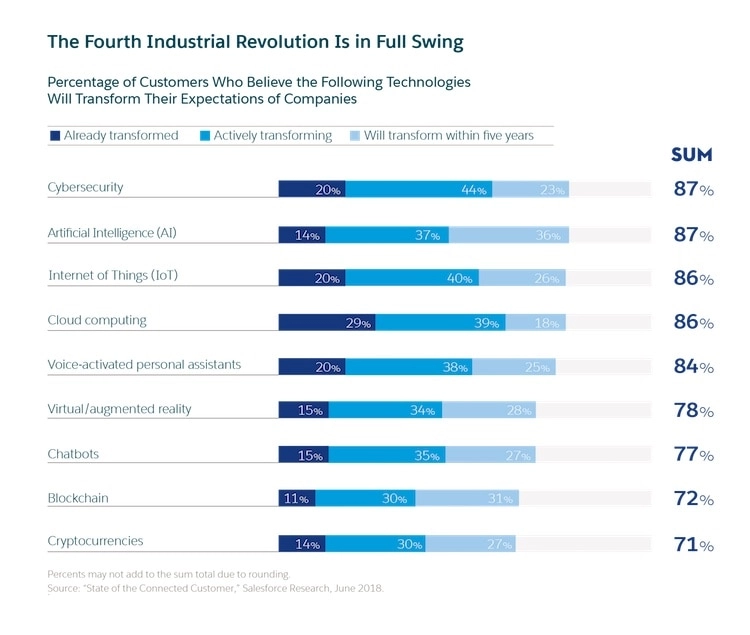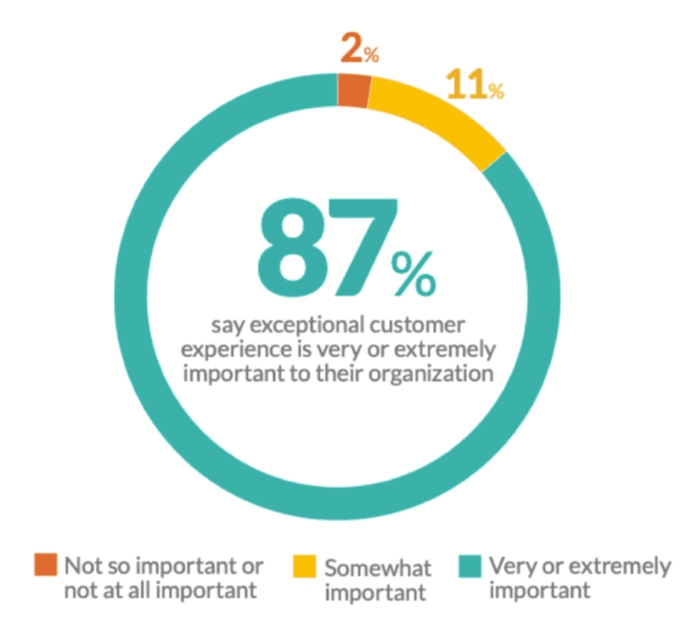How to Reinforce a Customer-Centric Culture in B2B Businesses
It’s not too much of an exaggeration to say that a business can stand or fall on the strength of its customer service. But what are the best ways to reinforce your customer-centric culture?
Building your business around your customers may sound like a no-brainer, but it’s vital not to let complacency creep in. You’re probably doing lots of great things already – however, there’s always room for improvement!
RingCentral US’s John Allen describes the customer experience framework as one of the “absolute fundamentals” of running a business. But, somewhat surprisingly, Forrester reports that only 23 percent of B2B companies have embraced a customer-centric approach.
The stats speak for themselves: 95 percent of customer-centric companies report that their customers are satisfied with their products and services, while only 46 percent of non-customer-centric companies can say the same.
Research has also shown that being customer-centric can actually help you retain employees, as they find their work more rewarding. Employees at 93 percent of customer-obsessed firms say they are happy to work at their firm compared to only 20 percent who say the same at customer-naïve companies.
Finally, of course, customer-centric culture will also help boost your revenue, which nobody’s going to sniff at!

So, how do you go about reinforcing your customer-centric approach to get the most out of your business?
Read on for some expert tips on how to learn from your customers, motivate employees, and embrace the latest technology.
Plan ahead
Step one is to make sure you have a clear vision of exactly what you want to achieve, and that every member of the company is fully on board with the plan.
It’s crucial to ensure all employees have a firm grasp of what it is you’re trying to do, backed up by support from leaders.
You’ll need to provide some training so that the message becomes part of the collective mindset – the aim is that everyone should be able to implement your strategy on a daily basis, without any prompting.
A great way to keep employees motivated is to let them know their contribution is valued. After all, they are the ones who deal with the customers on the front line! The insights they offer will be different from those of management and could provide the key to connecting with customers.
Create a work environment where everyone feels confident enough to join in with setting goals and sharing feedback. If they spot a way in which the message or its delivery could be improved, they should be happy to speak up without fear.
Listen, act, communicate
Again, it may sound obvious, but one of the most important parts of developing a truly customer-centric culture is to listen to your customers! Don’t assume you know what they want before you’ve asked them.
Customer feedback should be positively encouraged, whether it’s positive or negative – but it won’t get you very far unless you make sure it reaches the right people, who can then take the appropriate action.
Research tells us that customers genuinely appreciate it when their feedback is taken on board, so communicating with them about the improvements you’re making will let them know that their contributions are useful and valued.
Essentially, it’s about stepping into the customer’s shoes and seeing what your business looks like from their angle.
You could ask all staff – including leaders – to take a turn working in the customer support team. This way, they’ll find out exactly what customers love or loathe about the business, and develop a more empathetic approach.
As John Allen of RingCentral US puts it, great customer service is “a magnet that will keep customers coming back for more.”
You can read more of John’s expert advice here.
Make it personal
Another aspect of customer-centric culture that really makes the difference is personalization. If you truly understand and empathize with your customers, you’ll have the tools to make the experience exceptional for each individual.
According to recent studies, 72 percent of consumers say they only engage with personalized messaging, while 70 percent of consumers say a company’s understanding of their personal needs influences their loyalty.
Meanwhile, 71 percent of email marketers who have fully embraced personalization said their return on campaigns was ‘good’ or ‘excellent’ compared with 41 percent who are in the early stages of adopting personalization.
Nobody likes an inbox full of irrelevant spam, so keep your customers onside with effective messages tailored to their preferences. The initial ‘welcome email’ after a customer signs up or makes a purchase is a great way to make a lasting impression, especially if you offer discounts or incentives.
As you’d expect, the latest technology is being harnessed to create end-to-end personalization via the use of sophisticated algorithms.
However, we know that some customers are understandably wary of giving away too much personal information, so it’s good practice to reassure them on how you plan to use and store the data they give you.
Tools of the trade
Happily, there are many tools and systems available to help you reinforce your customer-centric culture.
For example, investing in the best call center software will maximize efficiency and minimize customer frustration.
How often have you heard people complain about having to speak to ‘a robot’? Well, that doesn’t have to be a bad thing – as long as the robot is equipped to handle the problem! Make sure your IVR software is up to scratch, and add a call-back feature to save customers time and money (see IVR meaning).
Skills-based routing – in other words, putting the customer straight through to the agent best equipped to handle their particular query – is another idea that sounds like total common sense, but a surprising number of businesses have yet to implement it.
We’ve all had that experience of contacting a call center only to be passed from pillar to post or placed on hold for eons – it’s maddening, right? If you remove that stress, your customers will love you for it, and it creates a better work environment for the agent too.
Artificial intelligence is getting stronger all the time, and chatbots are routinely used alongside human agents to optimize customer service. No doubt in the coming months we’ll see more innovations in this sphere.
Converting to CCaaS (Contact Center as a Service) is another way to modernize your systems and maximize efficiency. This delivers multi-channel integration via the cloud, and there’s a vital analytics service to boot.
You could also streamline your business by using a file sharing app, which is more efficient than sending documents via email, and is especially handy for remote working. Choose a good one and make sure everyone is aware of how it works.
Strategic affiliate marketing is a great tool for generating leads, driving revenue, and monitoring ROI, while referral marketing helps attract new customers – as long as your existing customers are happy to sing your praises!
Follow the trends
If you want to feel old, think about the fact that most B2B buyers are now millennials! Joking aside, this means that the way you communicated with customers in the past probably isn’t going to cut it for much longer.
Millennials want things to happen fast – and they prefer to communicate online rather than by phone, so your online presence becomes ever-more important, whatever the nature of your business.

An appealing website, ideally not created from a template, will be appreciated in particular by ecommerce B2B customers who prefer a ‘shopping experience’ comparable with B2C.
Make sure it includes plenty of high quality content, including video: 70 percent of B2B buyers watch a video as part of their product research before conversion.
Remember that video content can include live streaming for events and promotions. while podcasts and webinars are becoming increasingly popular.
Currently in a developmental stage, voice-generated SEO could be the next big thing, with content creators marking up sections to respond to voice searches. Your company could take a lead by embracing the new technology before everyone else does!
Keep it up!
However you decide to reinforce your customer-centric culture, don’t overlook the importance of setting out a clear plan and following the steps that will lead you to your goal.
Remember that technology is developing at a rapid pace, so it’s crucial that you and your employees never stop learning – and create additional plans to factor in the changes.
Check regularly to make sure your system is working to its maximum potential, including asking for customer feedback. If you keep in touch with the people who matter most, you will reap the benefits of their loyalty.
–
Richard Conn is the Senior Director, Search Marketing for RingCentral, a global leader in unified communications and Contact Center Solutions.
He is passionate about connecting businesses and customers and has experience working with Fortune 500 companies such as Google, Experian, Target, Nordstrom, Kayak, Hilton, and Kia.

 (
(





